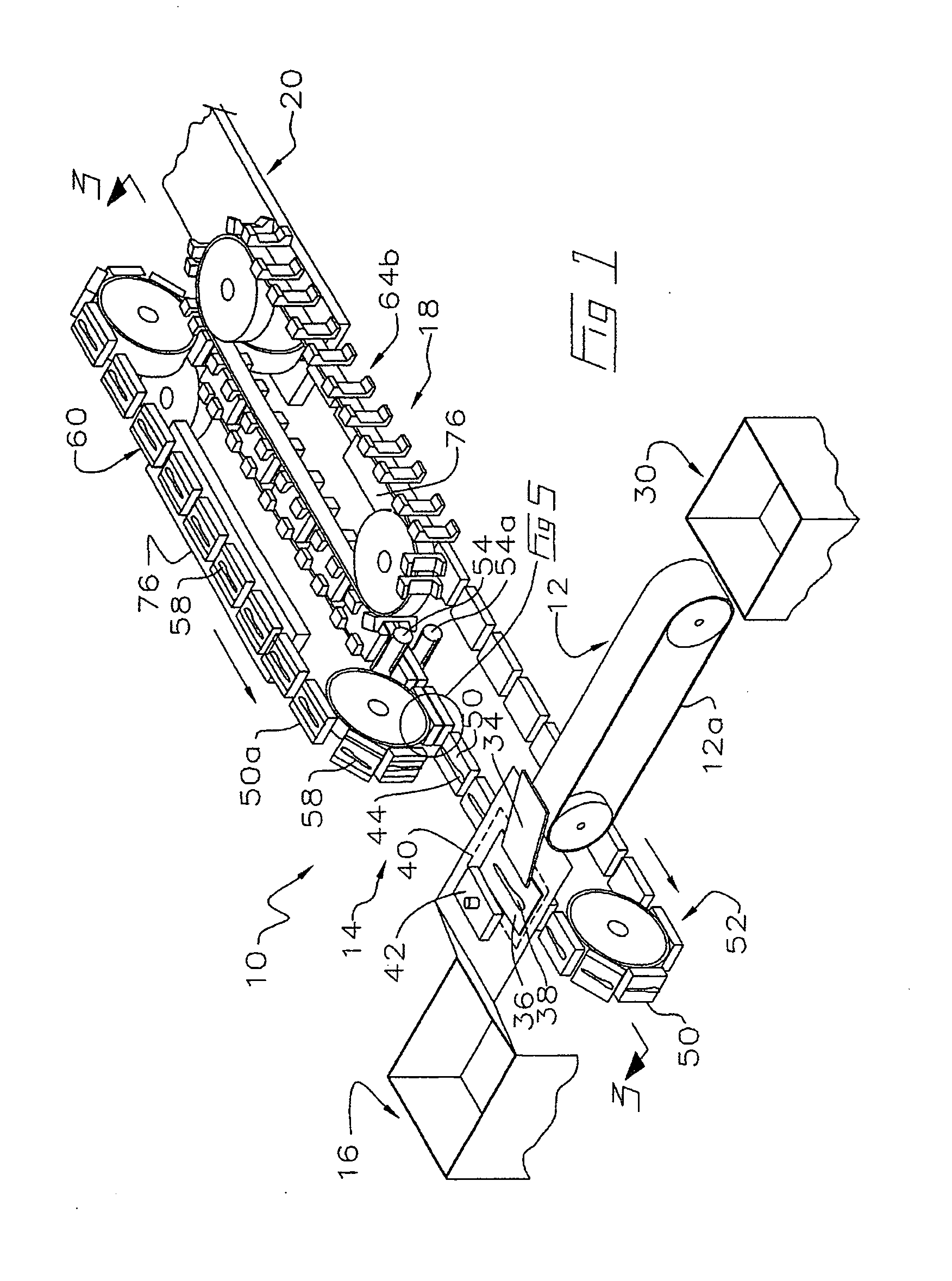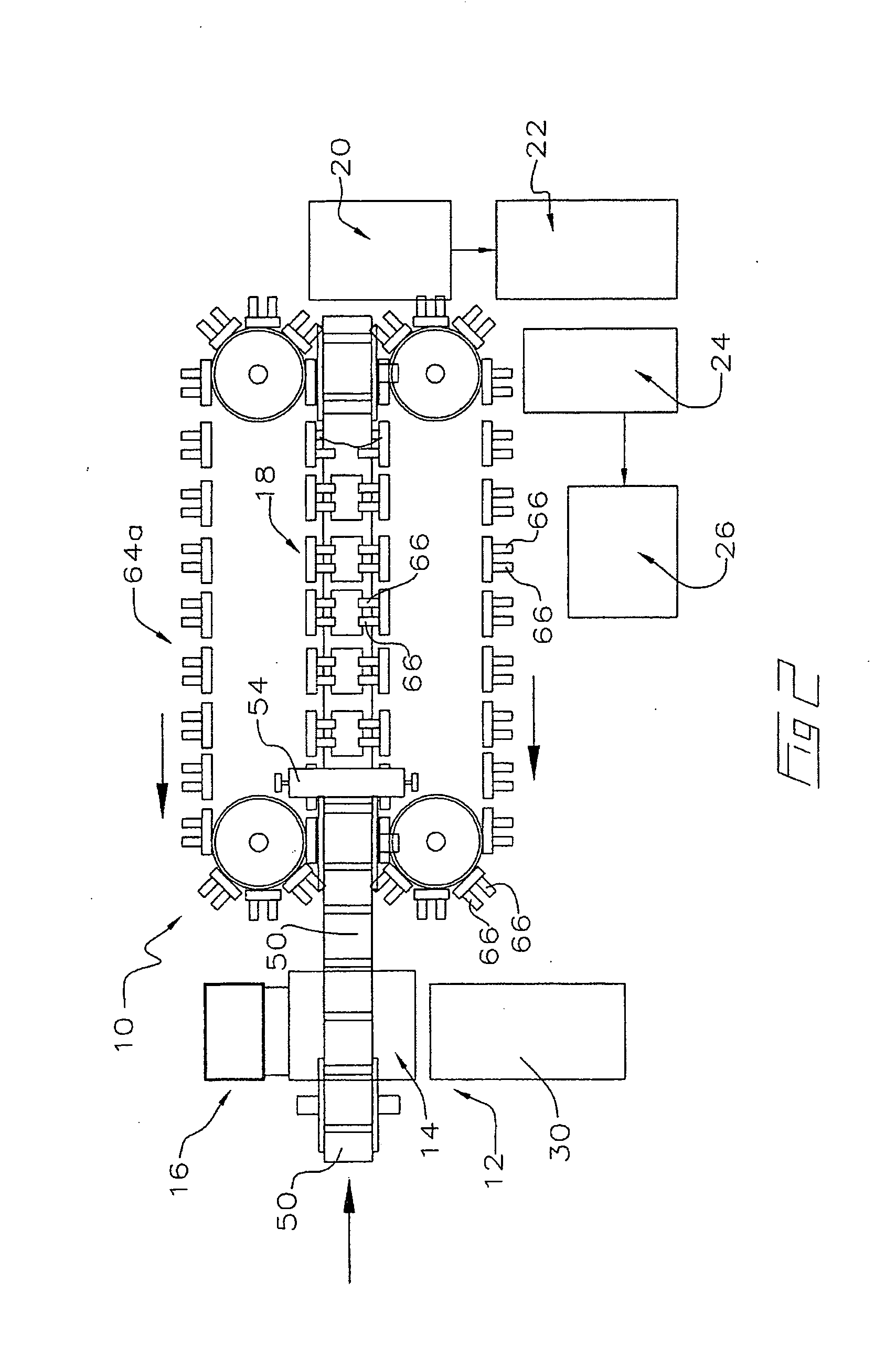Process of production of disposable wooden cutlery and product thereof
a production process and technology of disposable wooden cutlery, applied in the direction of wood punching, wood compression, tableware, etc., can solve the problems of inability to evolve the design of the utensils and the process by which they are manufactured, invariably inefficient production, and severely limited production capacity, so as to avoid breakage
- Summary
- Abstract
- Description
- Claims
- Application Information
AI Technical Summary
Benefits of technology
Problems solved by technology
Method used
Image
Examples
Embodiment Construction
[0052]With respect to fibre selection, the selection of appropriate source logs for production of wooden cutlery is important. Balk material which is stressed from knots or sweeps results in twisted end product and is therefore unacceptable. The challenge throughout is to avoid the end-product being twisted, spiraled or corkscrewed. Infeed material should be in the range of 10″ to 20″ diameter. Typically, logs are delivered in approximately 9 foot lengths, which is appropriate for 5 balks each. Balks are cut to 18½″ lengths, debarked, made round and have their centre points identified for veneering lathe mounting.
[0053]Debarked balks are veneered at approximately 0.038″ thickness, with outside width set at 17¾″ and a centre-line score set at 8⅞″ for ease of folding. Folding along the score creates two thicknesses of veneer each 8⅞″ wide. The veneering process should be conducted using the “pith centre” of the balk as the radius turning centre, otherwise, stresses in the layered vene...
PUM
| Property | Measurement | Unit |
|---|---|---|
| temperature | aaaaa | aaaaa |
| lengths | aaaaa | aaaaa |
| lengths | aaaaa | aaaaa |
Abstract
Description
Claims
Application Information
 Login to View More
Login to View More - R&D
- Intellectual Property
- Life Sciences
- Materials
- Tech Scout
- Unparalleled Data Quality
- Higher Quality Content
- 60% Fewer Hallucinations
Browse by: Latest US Patents, China's latest patents, Technical Efficacy Thesaurus, Application Domain, Technology Topic, Popular Technical Reports.
© 2025 PatSnap. All rights reserved.Legal|Privacy policy|Modern Slavery Act Transparency Statement|Sitemap|About US| Contact US: help@patsnap.com



